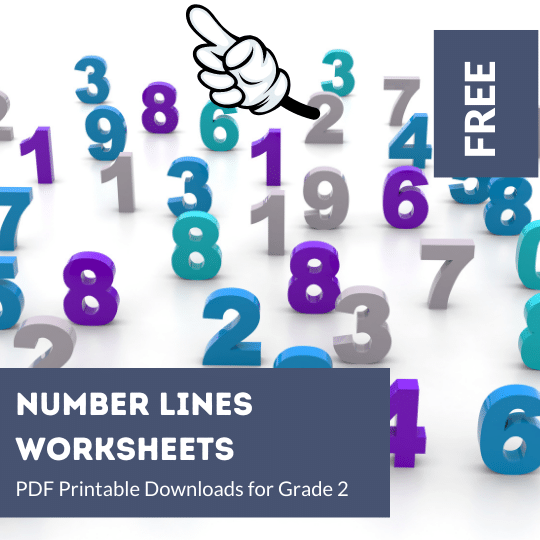![]()
Number Line Mixed Numbers
- Number line with numbers from zero to 10 worksheet
- Number line with numbers from 10 to 20 pdf printable
- Number line with numbers from 20 to 30 test sheet
- Number line with numbers from 30 to 40 sheet
- Number line with numbers from 40 to 50 pdf test with answer key
- Number line with numbers from 50 to 60 - find missing numbers
- Number line with numbers from 60 to 70 worksheet
- Number line with numbers from 70 to 80 pdf worksheet
- Number line with numbers from 80 to 90 pdf download
- Number line with numbers from 90 to 100 free download

Introduction
Understanding the concept of number lines and mixed numbers is essential in mathematics. Number lines provide a visual representation of numbers, allowing us to better comprehend their relationships and perform various operations. Mixed numbers, on the other hand, combine whole numbers and fractions. In this article, we will explore the connection between number lines and mixed numbers and how they can be effectively represented and manipulated.
What is a Number Line?
A number line is a linear representation of numbers, typically depicted as a straight line with numbers marked at equal intervals. It extends infinitely in both positive and negative directions. The number line helps us visualize the order and relative positions of numbers. It is a powerful tool for understanding arithmetic operations and mathematical concepts.
Understanding Mixed Numbers
Mixed numbers are a combination of a whole number and a proper fraction. For example, 2 3/4 and 5 1/2 are mixed numbers. The whole number represents a specific quantity, while the fraction represents a part of that whole. Mixed numbers are commonly used in everyday situations, such as when measuring ingredients for a recipe or indicating time.
Representing Mixed Numbers on a Number Line
To represent mixed numbers on a number line, we start by locating the whole number part. We mark the whole number on the number line and then represent the fraction part using appropriate divisions or intervals. For instance, if we want to represent the mixed number 3 1/2 on a number line, we locate the whole number 3 and then divide the interval between 3 and 4 into two equal parts to represent the fraction 1/2.
Adding Mixed Numbers on a Number Line
When adding mixed numbers using a number line, we can use the visual representation to help us. We start by locating the first mixed number on the number line, and then we move forward or backward to represent the second mixed number. Finally, we find the sum of the two mixed numbers by identifying the position on the number line where we end up.
Subtracting Mixed Numbers on a Number Line
Similar to addition, subtraction of mixed numbers can also be done on a number line. We start by locating the first mixed number on the number line and then move backward or forward to represent the second mixed number. The difference between the two mixed numbers is found by identifying the position on the number line where we end up.
Multiplying Mixed Numbers on a Number Line
Multiplying mixed numbers can be visualized on a number line as well. We can represent the first mixed number on the number line and then repeatedly move forward in increments of the second mixed number. The final position on the number line indicates the product of the two mixed numbers.
Dividing Mixed Numbers on a Number Line
To divide mixed numbers using a number line, we can utilize the concept of repeated subtraction. We start by representing the dividend (the first mixed number) on the number line, and then we repeatedly subtract the divisor (the second mixed number) until we reach zero or a remainder. The number of subtractions performed represents the quotient of the division.
Converting Mixed Numbers to Improper Fractions
Converting mixed numbers to improper fractions can aid in certain mathematical operations. To convert a mixed number to an improper fraction, we multiply the whole number by the denominator of the fraction, then add the numerator. The result becomes the numerator of the improper fraction, and the denominator remains the same.
Conclusion
Number lines serve as powerful visual tools for understanding the relationships between numbers, including mixed numbers. By representing mixed numbers on a number line, we can perform various arithmetic operations and gain a deeper understanding of their values and interactions. Whether adding, subtracting, multiplying, or dividing, the number line provides a clear representation of the results. Remember to utilize number lines and mixed numbers to enhance your mathematical skills and problem-solving abilities.
FAQs
1. Are number lines only used in elementary mathematics? Number lines are commonly used in elementary mathematics, but they can also be helpful in advanced mathematics and other fields like physics and engineering.
2. Can mixed numbers be represented as decimals on a number line? Yes, mixed numbers can be represented as decimals on a number line. They can be converted into decimals and plotted accordingly.
3. How can number lines be used to compare mixed numbers? Number lines allow us to visually compare the positions of mixed numbers. We can determine which mixed number is greater or smaller based on their relative positions on the number line.
4. Can number lines be used for fractions other than mixed numbers? Absolutely! Number lines can represent fractions, including proper fractions and improper fractions. They provide a visual representation of the magnitude and relationships of all types of fractions.
5. What are some real-life applications of mixed numbers and number lines? Mixed numbers and number lines are commonly used in various real-life scenarios, such as cooking measurements, time calculations, and architectural drawings.
